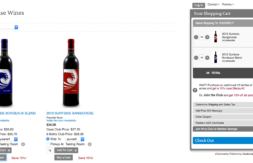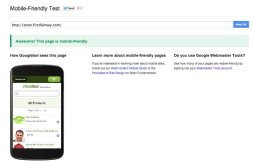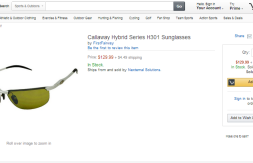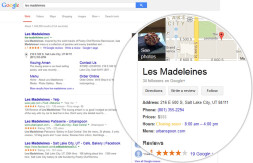How to Execute an Effective Holiday Marketing Strategy!

For most retailers, holiday sales are essential to their company’s financial health. With more money to be made now than in pretty much any other season, it’s no wonder brands want to savor the holiday profits from October through January. But with so many competitors, flooding the airways (and ethernet cables and mailboxes), it can be difficult to stand out. That’s why it’s so important to start planning and implementing your holiday marketing strategy early so you’re targeting the right people right when they’re looking to buy.
As a starting point, I highly recommend taking a browse through this excellent Holiday marketing guide, as well as taking the 5 key steps listed below.
1. Decorate Your Website (and Your Store!)
It’s not the holidays until it looks like the holidays. So, get decorating! Start in your store, going with more traditional ornaments, snowflake cut outs, or, really, anything that strikes your eye. Pinterest is sure to have creative ideas, and you can always buy unique wares off of Etsy. And of course, make sure to have an attractive holiday window to lure the customers in, and let all of your customers know on social media that you’re decorated and ready to go.
It’s also important to get your website and social media profiles in the mood, too. To promote specific holiday-themed products, create landing pages filled with holiday or wintry imagery, which you can snap yourself or grab from a stock photo site like Bigstock. The same images will also look great as your Twitter or Google+ banner. As you construct your holiday-themed pages, make sure to make them mobile friendly so that users can view all of their desired product info on the platforms they use most. And of course, integrate a few product and holiday-themed keywords so online searchers will find their way to your site—and hopefully, to your store.
2. Get Blogging
Your blog is the perfect venue for executing a holiday marketing strategy, especially if you’ve already got a healthy content strategy going. This could take the form of holiday themes that relate to your product or specialty. For example, “The 12 Days of Candy” would be great for a candy shop, while “5 Caffeine Resolutions for the New Year” would work well for a café.
Alternatively, you could feature a new holiday product every week, or give your readers an inside glimpse of your store as you prep it for the big season. Why not combine both strategies with, “12 Days of Irresistible Holiday Products?” Just make sure to plan out your holiday editorial calendar, get creative, and have fun with it.
3. Determine Your Incentives Strategy
Offering deals and incentives at the holiday season is a no-brainer. But for small businesses, doing so at the holidays is a fine art, as you want to make sure you incentivize your customers just enough without causing a rush you can’t sustain or pricing far lower than need be. That’s why it’s important to start planning early, taking a look at last year’s sales to determine price points and setting a calendar for releasing each kind of incentive.
And don’t forget: you have to promote your promotions. Will you be doing holiday mailers? Coupons? Deal sites? Radio or TV ads? A concerted social media and content campaign? Set your budget and start promoting your promotions as early and as frequently as possible.
4. Crowdsource Your Inventory
While some holiday products will always be in style, it can be difficult to predict what this year’s popular products will be. Why not take a quick Twitter poll pitting one item against the other to see what your customers really want? Alternatively, try inviting users to create their own Pinterest boards of their favorite items, promising to stock the ones that are most commonly pinned. In-store, place a voting sheet up by the register. Not only will this help you stock the right items, it’s also a form of marketing, as it invites your customers to engage more deeply with your brand. When you’ve picked your special holiday products, make sure to promote them heavily across your channels to show customers they can really have a clear effect.
5. Host a Party
A holiday party is a great way to get potential customers walking through your store—granted, of course, that you throw it a little early so it doesn’t conflict with holiday plans. Your party could take the form of treats and drinks during the shopping day, or an after-hours event to which you invite the whole community. If your store is engaged with a particular online community like Etsy, reach out to “makers” and ask them if you can feature their holiday products in-store for the party. That way, you’ll be drawing in a wider customer base. Or, why not have a holiday-themed potluck? Customers are inexorably drawn to food, and you’ll be cementing your place in the community while ushering potential customers through your door.
No Official Holiday to Celebrate? Make Your Own
So much attention is paid to the Big Holidays, but that doesn’t mean you can’t benefit from holiday shopping all year round. Why not make your own? Oreo, for example, creates Oreo images to match holidays year round. BigStock, on the other hand, curates entire image libraries around fun holidays, some of which they’ve sought, some of which they’ve created. Pair your invented-holiday promotion with a few quirky deals, promote it well on social media, and you’ll have a fun and attention-grabbing strategy for drawing customers in.
The Takeaway
The holidays can be the busiest season for businesses, but only if you’ve got a great marketing plan ready to go. So start planning early, have fun with it, and enjoy the season of giving (and buying)!














